|
|
| |
|




|
| ©
2000 -2002 USAdiver.com All Rights Reserved. |
 |
|

|
History
of Olympic Diving
|
by
Ron O'Brien
|
 |
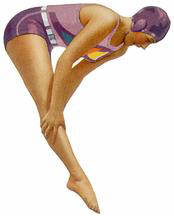
|
Fancy diving had its
origin as far back as the 17th century in connection with the
great gymnastic movement in Germany and Sweden. In the summertime,
gymnasts moved their equipment to the beaches, and acrobatics
over the water became a part of their activities. Diving, then,
is more related to gymnastics than to swimming. However, since
swimming and diving both use a water medium, they are naturally
linked. |
Platform diving (33 feet high) achieved international
notice in the 1904 Olympic
Games in St. Louis when it was included as an event on
the men's swimming program. Springboard diving was added for
the 1908 Games in London. Women's diving was slower in being
accepted. It was not until 1912 that plain high diving was
included in the Olympics, and 1920
that the first women's springboard contest was conducted.
Fancy high diving for women came into being in 1928 internationally.
|
 |
| As could be expected, Germany and
Sweden dominated the early competition. It wasn't until 1920
that the United States reached worldwide prominence in diving
by winning three of the gold medals in the Olympics (men's and
women's springboard and men's platform events). From that time
through 1992, the United States has been the world leader in
diving. The total count is 46 of 75 Olympic gold medals for
the United States. |
|
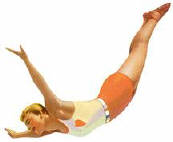
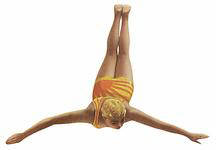
|
The women have been most important
in the development of U.S. diving supremacy. Ernst Bransten,
who is called the "father of diving in the United States," came
to this country from Sweden shortly before the 1920s. Bransten
brought with him a thorough knowledge of the fundamentals of
the sport and some revolutionary ideas for developing divers.
Among his many contributions was the construction of a "sand
pit" -- a diving board mounted over sand. This apparatus allows
the diver to practice many of the movement patterns of diving,
especially the approach and takeoff, more efficiently. |
| Mike Peppe, the swimming and diving
coach at Ohio State University from 1931 to 1963, did more to
promote and develop diving in this country than any other man.
By maintaining a strong squad of divers on his collegiate swimming
teams and treating diving and swimming with equal importance,
Peppe encouraged other schools to emphasize diving in order
to compete with his teams evenly. Peppe's influence on college
programs has resulted in improved facilities for diving, more
practice time being made available, greater respect for the
sport and the birth of a new type of coach -- the diving coach.
It is for this reason that he might be designated "the father
of collegiate diving in the United States." |
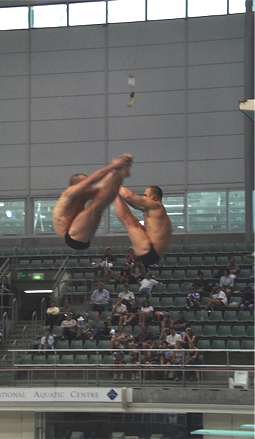 |
Since 1904, diving has changed in leaps and bounds
and is still progressing rapidly. In the early days there were
14 platform and 20 springboard dives. Today there are 63 dives
on 1-meter springboard, 67 dives on 3-meter springboard and
85 dives on platform. Difficulty has changed from the point
where a double somersault from the platform was dangerous in
1904, to flawless performance of the reverse three and a half
somersaults today. It could be said we have just about reached
a peak as far as the difficulty of the dives performed is concerned.
However, since that statement was made by many people 25 years
ago, it may be best to bide our time and see what the future
brings to the sport. |
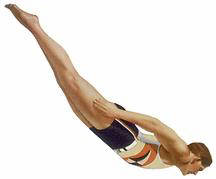 |
Olympic Record Since
diving was introduced to the Olympic Games, the United States
has won 46 out of 75 gold medals and 125 of 225 total medals.
This includes: 15 of 19 gold medals in men's 3-meter springboard
and 11 of 17 in women's 3-meter springboard, 12 of 21 gold
medals in men's platform and eight of 18 in women's platform.
The only divers to sweep gold medals at consecutive Olympics
were U.S. divers: Greg
Louganis (1984, 1988) and Pat McCormick (1952, 1956).
|
|
Based on a recent study of medals available versus medals
won in all sports, the United States has enjoyed its greatest
Olympic success in diving.
by Ron O'Brien, Ph.D. Eight-time U.S. Olympic team coach
|
|
|

Pick
A Color





|